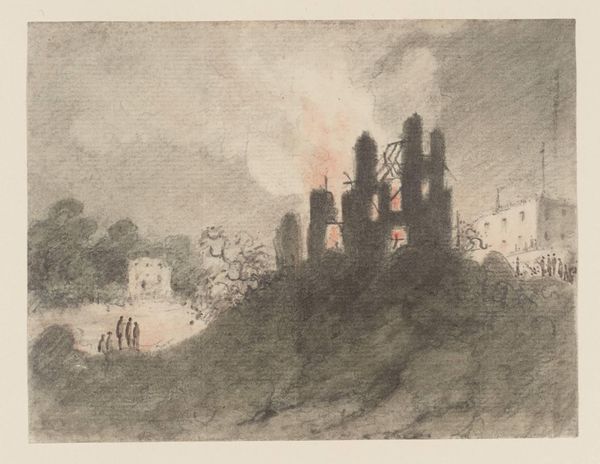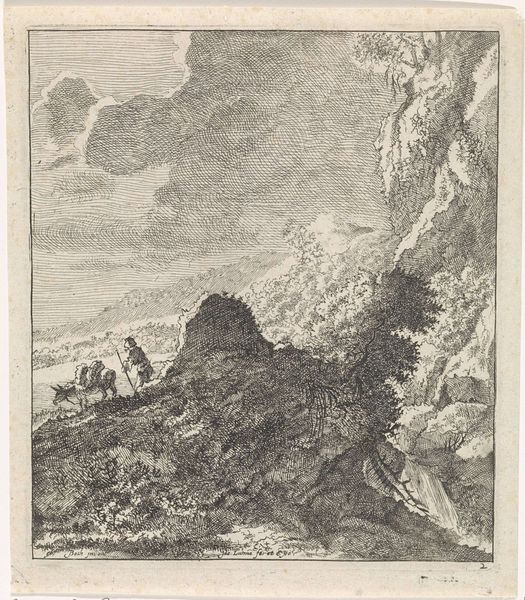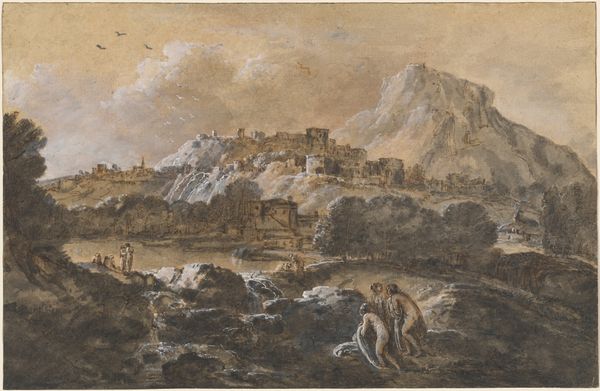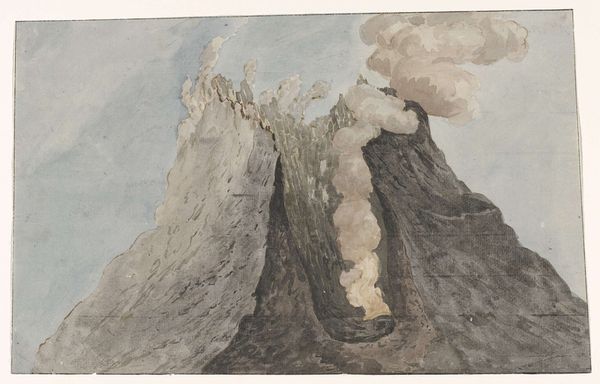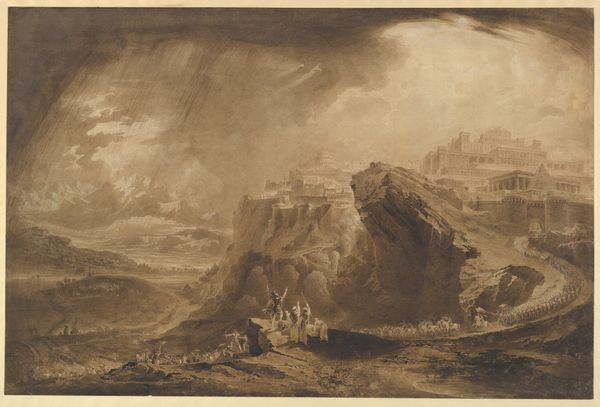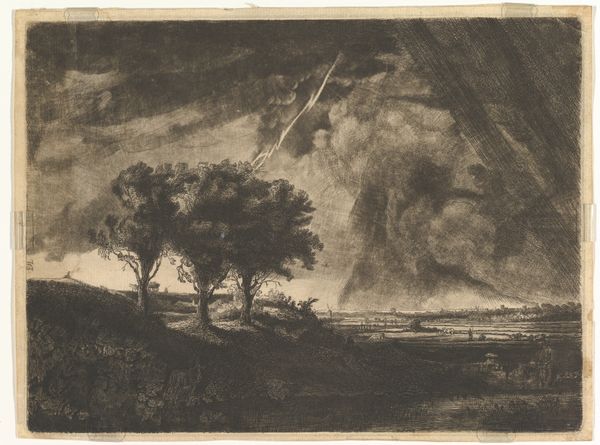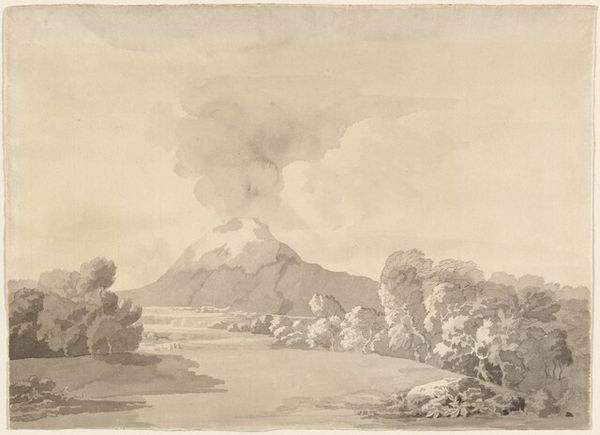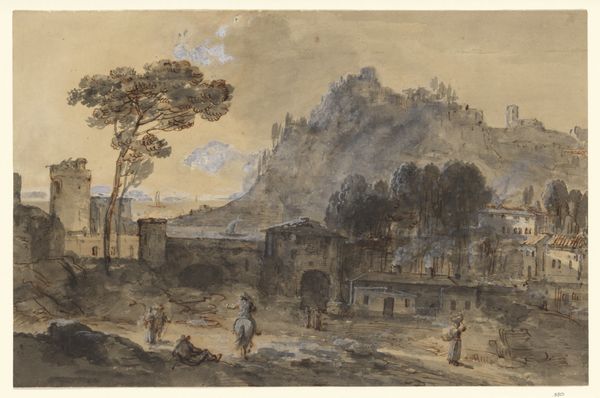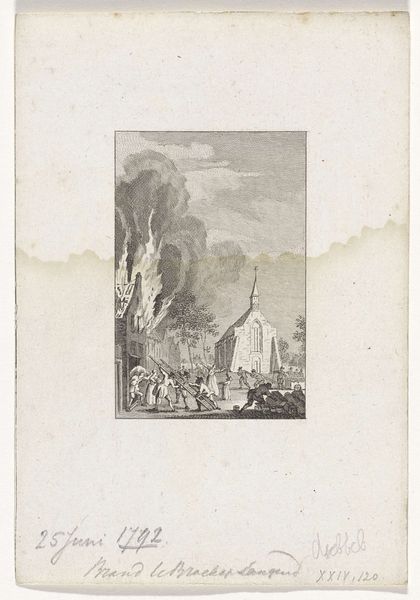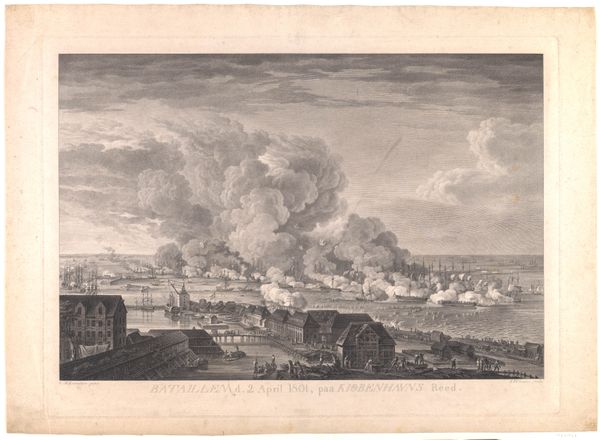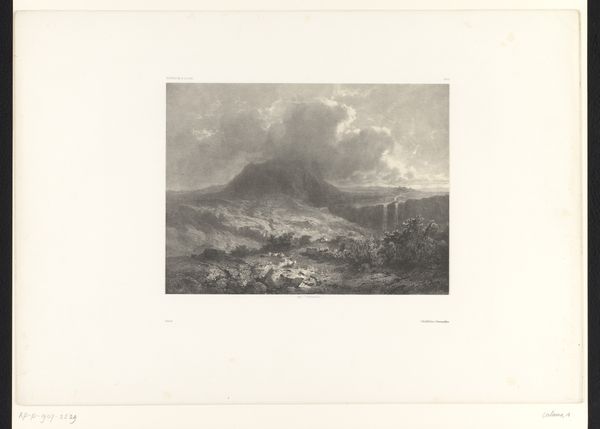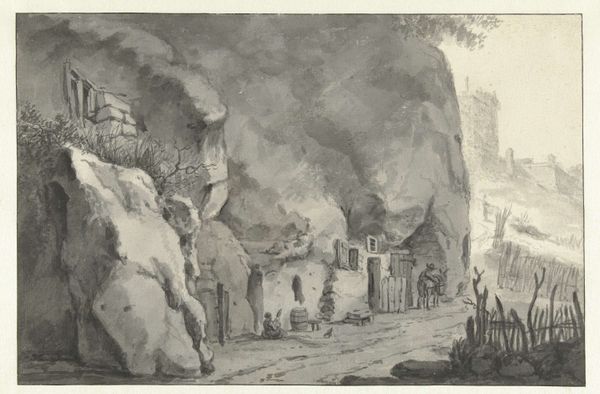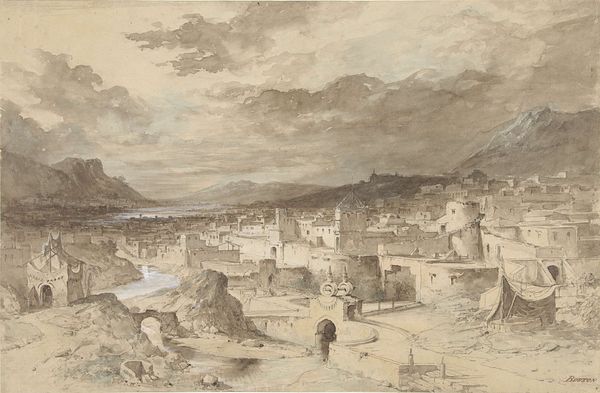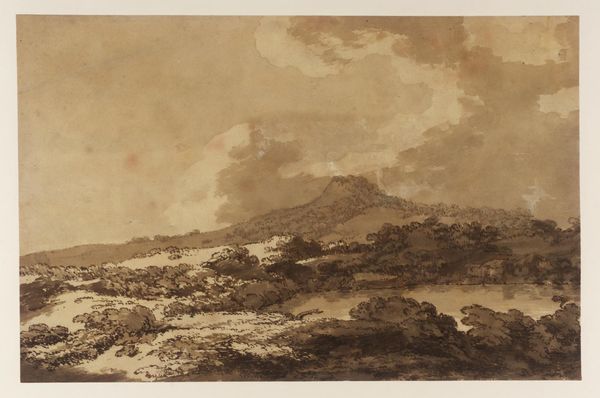
Eruption of Mt Vesuvius, Seen from the Ponte della Maddalena in Naples c. 1783
0:00
0:00
Dimensions: length 704 mm, width 484 mm
Copyright: Rijks Museum: Open Domain
Francesco Piranesi made this watercolor drawing of the ‘Eruption of Mt Vesuvius, Seen from the Ponte della Maddalena in Naples’ in the late 18th or early 19th century. It depicts a dramatic natural event that captivated the European imagination. The image is a potent mix of the sublime and the picturesque, popular categories at the time. Vesuvius was more than just a volcano; it was a symbol of nature's overwhelming power, evoking feelings of awe and terror. Naples, a city built on the volcano's slopes, was at once vulnerable and resilient. This image encapsulates that paradox. The orderly procession of figures in the foreground offers a sense of human control against the backdrop of chaotic eruption. To truly understand this work, consider the era's obsession with both scientific observation and romantic expression. Travelogues, geological surveys, and artistic renderings of Vesuvius were all the rage. How did the institution of art shape and reflect these broader cultural interests? Historical archives, scientific reports, and travel literature can provide further insight.
Comments
rijksmuseum about 2 years ago
⋮
The eruption of Mt Vesuvius on 8 August 1779 caused great panic with Neapolitans, for it reminded them of the catastrophe that destroyed Pompeii in AD 79. Although it is uncertain whether Desprez actually witnessed this event, he depicted it with the intensity of a personal experience. The outburst lights up the night sky and casts shadows as in daylight, dramatizing the figures’ desperate flight.
Join the conversation
Join millions of artists and users on Artera today and experience the ultimate creative platform.
